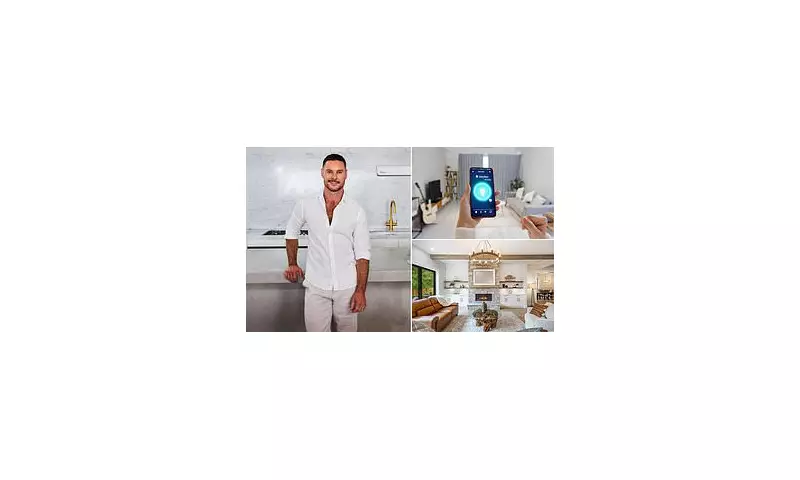
As the new year approaches, a significant shift is emerging in British home design, with industry experts predicting the definitive end of cold minimalism. According to renowned interior designer and The Block judge Darren Palmer, 2026 will be the year our homes transform into warm, personal, and deeply calming sanctuaries.
'Cold minimalism is done,' Palmer authoritatively told the Daily Mail. 'It is giving way to spaces that feel genuinely calm and warm.' He explained that both designers and homeowners are now prioritising what he terms 'sanctuary-style living', creating homes that feel more like personal retreats than sterile showrooms or pages from a catalogue.
The Rise of Warm, Tactile Interiors
The new design ethos moves the emphasis from how chic a space looks to how comfortable and personal it feels. This philosophy manifests in furniture you genuinely want to sink into, textures that invite touch, and materials selected as much for their comfort as their appearance.
Palmer identifies two key stylistic directions gaining traction for 2026. The first is 'soft brutalism', which artfully pairs raw materials like concrete or brick with soft elements such as plants, natural fibres, and plush fabrics. The second is a calming, textured approach inspired by the 'quiet luxury' trend, featuring chunky columns, scalloped edges, coloured stone, and a thoughtful blend of matte and gloss finishes.
Colour palettes are also undergoing a dramatic change. The ubiquitous greys and light oaks of the past decade are being replaced by richer, earthier tones. Palmer's favourite combinations for the coming year include blue, brown, and cream; burgundy and cream; and olive and cream. He also highlights palettes featuring moss, caramel, terracotta, honey wood, dusty plum, and deep eucalyptus.
'Colour is the approach for ceilings, walls, and cabinetry, not just soft furnishings,' he stated, indicating a more bold and comprehensive use of colour throughout the home.
Appliances as Integrated Art Pieces
One of the most notable cultural shifts in home design is the rising expectation for appliances to be beautiful as well as functional. Palmer points to the Shark TurboBlade fan as a prime example of this trend, where high-performance engineering merges with a refined aesthetic to create a product that blends seamlessly into a premium living space.
'We're in a phase where home appliances are no longer hidden away or afterthoughts,' Palmer observed. 'The term "appliance-as-art" is apt.' These new-generation appliances are designed to be sleek, quiet, and customisable, complementing the decor rather than dominating a room with a clunky, industrial presence.
This integration extends to smart home technology. In his own home, Palmer utilises smart lighting, invisible sound systems, and multi-zone climate control—all chosen to enhance daily comfort without visually overwhelming the space.
Craftsmanship and Comfort Take Priority
The materials defining 2026 interiors follow this same emotional logic, focusing on warmth and authenticity. Expect to see warm timber, veined stone, linen, wool, corduroy, velvet, and plaster. Metals remain strong, but the true marker of modern luxury is anything handmade or crafted with evident care.
'Craftsmanship is real luxury,' Palmer asserted. 'Creating things built to last will always hold more value than anything made for fast fashion or fleeting trends.'
Some trends, however, have been declared officially over. 'Millennial grey' is a 'dirty word', and overly matching furniture sets are finished. The once-dominant combination of oak, white, and grey is now considered tired, making way for darker brown, walnut, and hazelnut tones.
Surprisingly, the bouclé fabric trend shows remarkable staying power. Palmer admitted he expected its moment to have passed, but it persists in curved sofas and deep-pile rugs, pointing to a fundamental human need to feel comforted and embraced by our interiors.
For those looking to instantly elevate their homes, Palmer recommends three simple steps: swap out soft furnishings, introduce a statement lighting piece, and bring in art. These are all effective opportunities for layering personality into a space.
Despite the influx of new trends and materials, Palmer concludes that good design ultimately returns to fundamentals: compliment and contrast, proportion, scale, rhythm, and flow. This is precisely why Britons updating their homes for 2026 are leaning toward pieces that last, multitask, and make their spaces genuinely feel better—whether it's a velvet chair, a walnut cabinet, or a sleek fan that doubles as modern decor.





